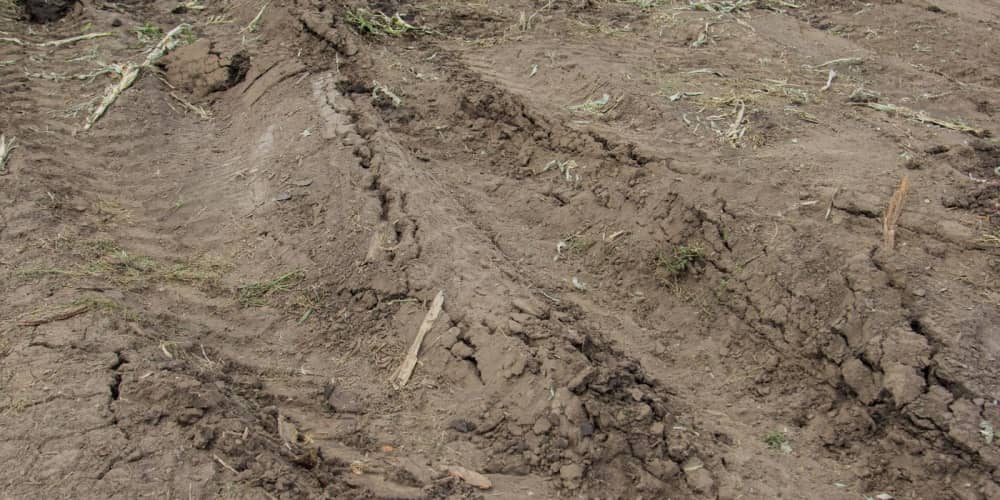Soil Density Tests and Why They Matter in Construction
Soil compaction is one of the most crucial components of any construction project. In order to have a solid foundation for any structure, you need to have a solid base of earth. Compaction is critical in creating a foundation capable of holding any future loads, so soil density tests are necessary for the construction industry.
If compaction is not done properly, it can have a terrible effect on the integrity of any structures including roads, buildings, and more. As such, there are government standards and private services dedicated to performing scientific measurements of the compaction level on a construction site.
These soil compaction test methods help ensure that construction crews and equipment operators have compacted the soil well enough to start building on. We will cover why soil compaction matters, the purpose of the density tests, and what soil compaction equipment you'll need to pass the test.
What Is the Purpose of Soil Compaction?
The primary goal of compacting soil on a construction site is to reduce the amount of space between the dirt particles, allowing the soil to become denser. This creates stronger soil that has less settlement and lower permeability and reduces the risk of wear, erosion, and maintenance. The riding of any air pockets or places water can creep in is a vital component of any soil compaction effort.
Why Soil Compaction Tests for Foundations Are Important
The reason soil density testing is so important is that it tests and measures the strength of the compacted soil. This will notify the foremen and equipment operators whether or not a section needs another pass on the equipment or if they can start the next stage of construction.
Without this extra testing and insurance, there are increased risks of structures breaking down, needing repairs, or even collapsing over the course of time. Potholes, sinkholes, or sagging in the road are often signs that the soil underneath the road was not compacted well enough as the ground has shifted to create these deformities. This can lead to costly repairs and maintenance that could have been avoided if done correctly from the start.
How to Test Soil Compaction and Soil Density
Soil testing is commonly referred to as Proctor tests and usually starts with a lab technician or knowledgeable engineer taking a soil sample from the compacted areas. Typically, the soil moisture level is then tested at different amounts of wetness and densities.
As weather and moisture change all the time, it can have a serious impact on the way soil behaves. Therefore, dry density testers want to ensure that the soil will hold up in changing environments. The tester's goal is to find the point where maximum dry density meets the optimum moisture content of the soil. The most common soil density testing methods include the nuclear meter test, also called a nuclear density test, and the sand cone test.
The sand cone method is a reliable ASTM D1556 and AASHTO T 191 method that involves using a sand cone apparatus. Using this method, a small hole is excavated on-site and a jar filled with sand, with a weight that has been predetermined, is placed over the hole. The sand is then funneled into the excavated hole until it has been filled. The excavated soil and remaining sand in the apparatus are then returned to the lab and tested.
The benefits of this method are that it is accurate and reliable, doesn't require excessive training, and is cost-effective. However, it does take longer than other methods, is limited to certain soil types, and shuts down nearby heavy equipment during the soil testing.
The second method is the nuclear density gauge test method. This uses soil density testing equipment called a nuclear gauge that emits radioactive particles and a detector that receives the transmissions. This method has two modes: direct transmission, where a rod is put into the ground from a pre-drilled hole, or the backscatter mode when the rod stays in the machine.
These nuclear gauge density tests typically take just a couple of minutes, making it a great way to test soil on large projects. All the calculations are also done directly on the machine and can be used on several types of soil. However, these machines are extremely expensive and lots of regulatory requirements and skills around their use.
Equipment for Soil Compaction
There are a few types of soil compactors that can be used to ensure that you pass the soil density test on the first try: smooth drum rollers and Padfoot rollers, which both have a single drum, and tandem rollers, also called double drum rollers.
Smooth drum rollers are soil compactors with a single, smooth drum on the front of the machine and two wheels on the back. They provide vibrations to the ground that allow the soil underneath to rearrange itself and remove any voids.
Often used when trying to create as flat a surface as possible, single-drum rollers are great for road work, driveways, parking lots, and large sidewalks. They are best for materials like sand, gravel, or sub-bases on heavy earthworks projects.
Padfoot rollers also have only one drum but these drums have teeth-like juts. Because of their design, these machines are great at compacting cohesive soils like clay or mud and should be avoided on sandy job sites.
Lastly, there are the double-drum rollers. Similar to single-drum rollers, double-drum rollers work through their vibratory effects. They can be used for compacting soil, gravel, stone layers, and sub-bases. However, they are most often used for asphalt as single-drum vibratory rollers are generally more useful for the same job.
Does your current project require soil density testing? Rent a soil compactor ranging from equipment like Padfoot rollers, smooth drum rollers, and double-drum rollers from DOZR to ensure you pass your soil compaction test.

